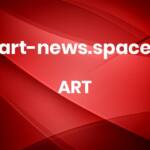The third and latest edition of Chicago Exhibition Weekend (CXW) was a lively, citywide event that included gallery and institutional exhibition openings, panel discussions, private collection visits, and festive communal dinners hosting crowds of VIPs, curators, and collectors during its September 19–21 run.
This time around, the platform got an extra shot of energy and attention, as it coincided with the opening of the Chicago Architecture Biennial, another citywide initiative, under whose auspices came the Friday opening of “Shift,” a major show at the Chicago Cultural Center. Another anchor show, “Over My Head: Encounters with Conceptual Art in a Flyover City (1984-2015),” was spearheaded by Abby Pucker, the dynamo organizer who is founder and CEO of Gertie, the civic and cultural agency that produces exhibition weekend. “Over My Head” was curated by Chicago-based art critic and historian Gareth Kaye along with Iris Colburn, a curatorial assistant at the Museum of Contemporary Art Chicago (MCA).
Abby Pucker at the Chicago Exhibition Weekend (CXW) kickoff dinner, hosted by Gertie. Photo: Matthew Reeves/BFA.com ©BFA 2025
“This year felt like it’s starting to be what I imagined, which is that people, galleries, and institutions plan to do openings and events during this time,” because of the attentive crowd in town, Pucker told me. “That’s what I’ve always wanted: us creating the infrastructure and other people can really activate it.”
There was plenty going on, starting on Thursday, with Pucker and her team hosting the opening reception of “Over My Head,” followed by a dinner for hundreds in a tent at the the main hub at 400 N Peoria, in the city’s Fulton Market District.
Installation view of “Sara MacKillop: The Cutaway View,” at Good Weather, in Chicago. Photo: Eileen Kinsella
Friday held a full day of gallery and collection visits, followed by another sprawling dinner at the warehouse outside of Douglas Park that houses Good Weather gallery, where British artist Sara McKillop has a fascinating show, “The Cutaway View.” And that was just by Friday, before the weekend proper even got underway.
Opening reception for “Over My Head: Encounters with Conceptual Art in a Flyover City, 1984–2015 .” Photo: Bob (Robert Heishman + Robert Salazar)
Amid a flood of gloomy art world news, including gallery closures, art fair cancellations and postponements, and a pronounced market contraction, the vibrancy of the Chicago art scene felt like a much-needed bright spot.
The Right Recipe
What’s the secret formula for Chicago’s success? For starters, measured, organic growth by dealers in a city with relatively low overhead.
“Collectors are supportive of the galleries at all levels,” Gray Gallery director Valerie Carberry told me as we strolled through a show of Alex Katz‘s latest paintings at the gallery’s main space in West Town. And indeed, collectors came out in force. Just some of those in attendance were Heiji Black, Ellen-Blair Chube, Larry Fields, Helyn Goldenberg and Michael Alper, Rachel Kohler, Nancy Lerner and David Frej, Sundeep Mullangi, and Ilan Shalit. Collectors like Murat Ahmed and Helen Zell hosted visitors.
“We have such great institutions here,” said Carberry, noting not only the Art Institute of Chicago and the MCA but also university museums such as the Block Museum of Art at Northwestern and the Smart Museum of Art at the University of Chicago. There are also numerous great art schools, which, Carberry said, “creates a great ecosystem. So many artists are able to come here for school and remain and practice here.” That’s partly down to reasonable studio costs, she said.
“Shift: Architecture in Times of Radical Change,” part of the Chicago Architectural Biennial at the Chicago Cultural Center. Photo: Eileen Kinsella
“There’s a real sense of stability here, rooted in the city’s collective care and focus on itself,” said Mariane Ibrahim Gallery director Emma McKee. “Chicagoans share a profound love for Chicago, and during difficult times the community tends to turn inward. What Abby is fostering through Chicago Exhibition Weekend and EarlyWork exemplifies this—initiatives designed to forge sustainable pathways and to focus on longevity.” Run by Gertie’s head of programming and audience development Chanelle Lacy, EarlyWork is a membership network focused on art and culture in the city.
Veteran Chicago gallery owners John Corbett and Jim Dempsey, of Corbett vs. Dempsey, who recently celebrated 20 years, agree that the CXW platform is an idea whose time has come, particularly after earlier attempts failed to coalesce.
“The galleries can’t just do it on their own. They need an outside force,” said Dempsey. “And Gertie is a force that can create platforms for things to happen. It’s essential to putting a framework around a moment in a great city, but you need the right cooks to come up with that recipe.”
Installation view of “Nick Drnaso: Ghost Works,” at Corbett vs. Dempsey, Chicago. Photo: Bob (Robert Heishman + Robert Salazar). Courtesy Corbett vs. Dempsey.
The gallery hosted a concert, wine tasting, and book launch on Saturday after opening two shows. One, an exhibition of new sculptures, paintings, and collages by Aaron Curry, “Raw Dog,” marked the artist’s first solo show in Chicago. Also intriguing is “Ghost Works,” by Nick Drnaso, who is best known as a graphic novelist. In typical adventurous Corbett vs. Dempsey fashion, after a friend connected them to Drnaso and they visited his studio, they offered him his first-ever gallery show.
“The weekend felt triumphant,” said Corbett. “Abby did a fantastic job wrangling a lot of disparate threads into a wonderful overall weekend. Our Saturday events were packed and exciting, mixing music and art and viniculture in a seamless way. A total blast. We loved the whole weekend and can’t wait until next year.”
Art x Tennis Anyone?
Other spontaneous spins on the art-centric theme included a “tennis mixer” that Document gallery founder Aron Gent hosted for the third consecutive year with Gray gallery that drew 50 people to fill up a local court. “Momentum has been building,” Gent told me. “Many people who are art enthusiasts really love tennis. It’s kind of like the art sport.”
Installation view of Kiah Celeste and Gordon Hall, “Artifact Unidentified,” at Document Chicago. Courtesy the gallery.
“We had great traffic on Saturday, with good people coming through,” he added. Visitors were greeted with “Artifact/Unidentified,” presenting works by Kiah Celeste and Gordon Hall.
The son of artists, Gent moved to Chicago two decades ago after studying photography. He had a studio practice and was working for a small print studio and curating shows for friends’ spaces when he founded Document, primarily as a print studio and later a project space.
He eventually brought on Sibylle Friche as gallery director because of her extensive experience. “I’d never actually worked at a gallery before, which is kind of hilarious,” Gent told me. Fairs including Expo Chicago, NADA in New York and Miami, and FIAC in Paris broadened the gallery’s exposure. This year, he is participating in Art Basel fairs in both Paris and in Miami Beach. He also recently opened a branch in Lisbon, Portugal.
Document gallery directors Aron Gent and Sibylle Friche. Photo by Davide Corona.
“Things are very affordable here compared to other cities, so it allows us to be more free,” he said. The print shop is also crucial in meeting expenses.
In addition to lower costs, Gent says the scene is “not as competitive” as some other art hubs. “All of the galleries get along. We’re all super cordial, hang out, and see each other regularly.”
Gray’s Carberry agrees. “I think that’s what keeps things really healthy in Chicago. The galleries are really collaborative with one another and there are so many collegial relationships. Our scene isn’t as big as New York so I think it serves us to play well together and get along.”
Tam Ochiai, United Colors of Benetton (circa 1993). Courtesy Hans Goodrich.
Daisy Sanchez is co-founder, with Peter Anastos, of Hans Goodrich Gallery in the Pilsen neighborhood. Sanchez proudly told me the gallery had been open “one year and two days,” and that the space was “mobbed” during its Saturday opening. It also sold several works on view in “Shopping Bag,” by Tam Ochiai.
Comparatively low rent in Pilsen combined with “doing everything ourselves,” often including transporting artworks, has allowed the gallery to thrive, Sanchez said. The gallery has organized six exhibitions and participated in the Basel Social Club satellite fair.
This year, Hans Goodrich is participating in the Paris satellite fair known as Place des Vosges, thanks to an earlier gallery visit and then an invitation from organizer and dealer Chris Sharp. Sanchez said she and Anastos are “over the moon” about the upcoming fair, which she said is relatively affordable even if it constitutes a heavy lift for the young gallery.
“I visited the first edition of Place des Vosges last year, and I remember calling Peter and saying, ‘This is so beautiful, and perfectly scaled and intimate. I would love it if we could get invited to do this fair in five years.’ We’re so grateful that what we’re doing is resonating with people in and outside of Chicago, and so lucky to be able to do what we love and not be stressed up to our eyeballs about money, do the shows we’re excited about, and work with people that we love.”



